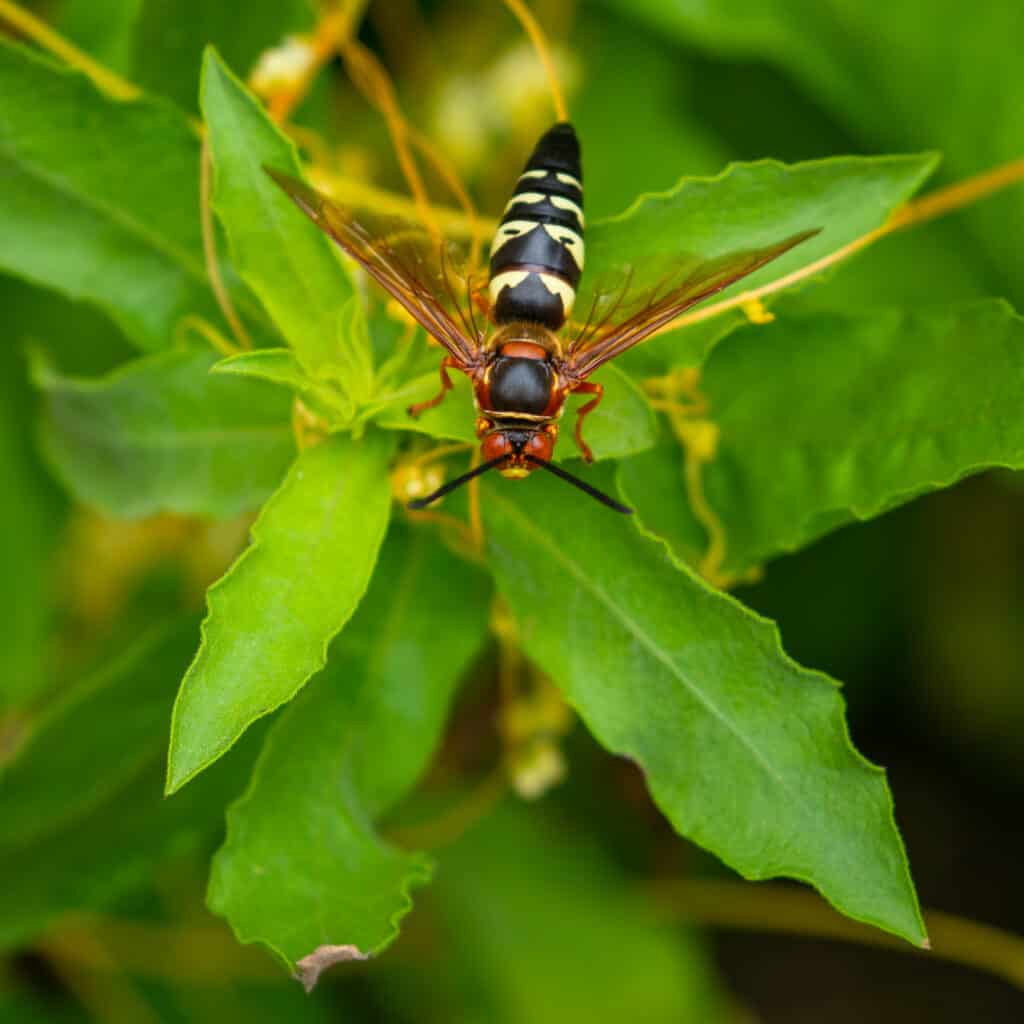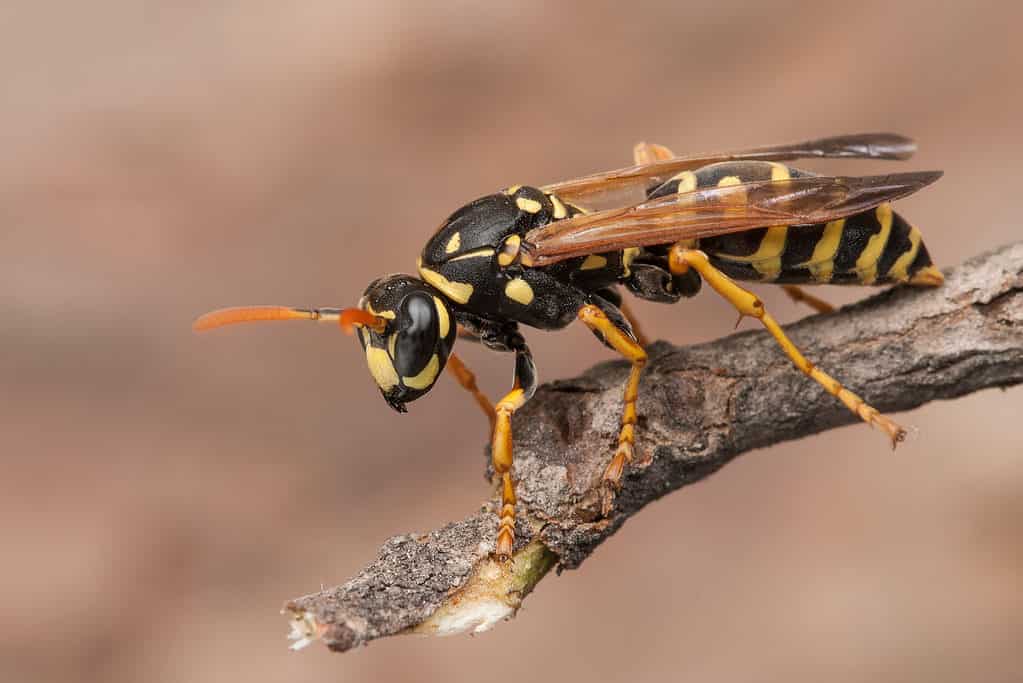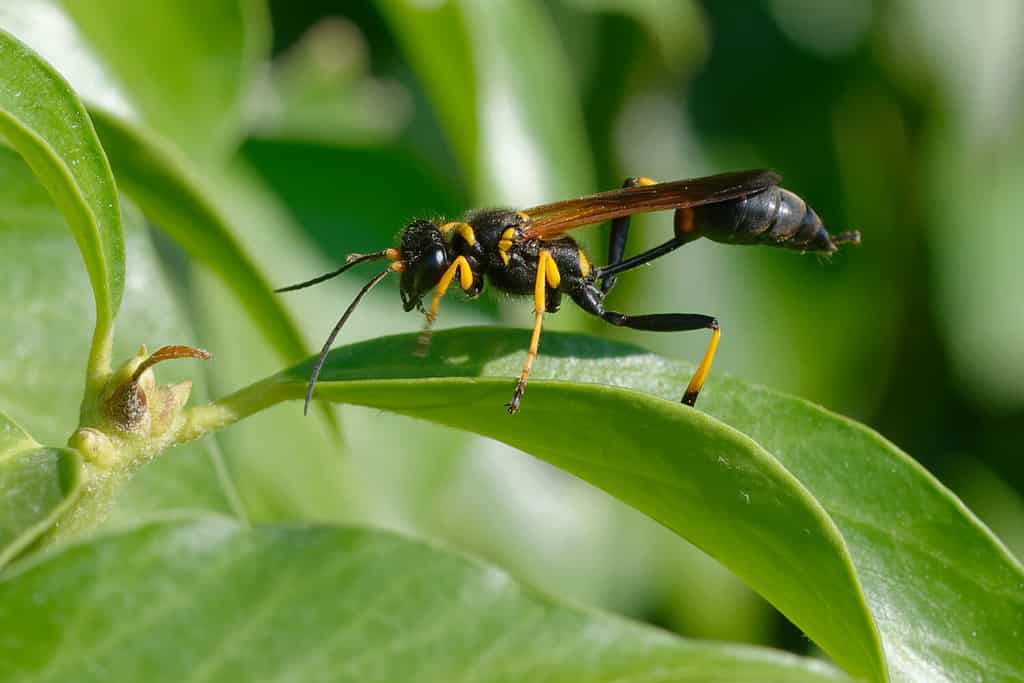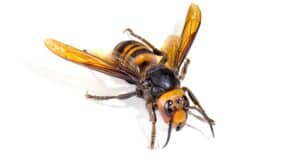You probably know not to agitate a wasp but sometimes, it’s a simple mistake and in the next second, you’re feeling searing pain. Discover the types of wasps in Illinois ranked by the pain of their sting!
Schmidt’s Pain Index Explained
Justin Schmidt, an entomologist, took on quite the unusual task when he decided to experience the sting of various stinging insects, including ants, bees, and wasps. He put the original paper together in 1983 and within those pages, Schmidt listed the different types of venom these insects use. Alongside this information, he clearly explained the pain he experienced with each sting.
If the sting was harmless, he rated it zero. But the pain scale goes up to level four, which is when the pain of the sting reaches debilitating levels. Not only does he rate the sting, but he offers a rather flowery description of each, even describing one sting as “lonely,” because of the way the pain localizes into a single droplet-sized part of the skin. Schmidt just proves that not all heroes wear capes.
Types of Wasps in Illinois Ranked by the Pain of Their Sting
Yellow Jacket
Schmidt’s Pain Index Level: 2
When you see a yellow jacket at first glance, you may think it’s a bee. They have black and yellow colors but are larger than your typical bee and display notably aggressive behavior. They’re especially attracted to the snacks you enjoy later in the summer into October. This is when they’re most active.

Yellow jackets are common in North America.
©Henrik Larsson/Shutterstock.com
If you have an outdoor barbecue, you’re likely to attract some of these wasps. They may also nest near your home and an accidental encounter with one could result in a painful sting. A sting poses a serious threat to anyone allergic and could be fatal. For those who aren’t allergic, the symptoms of a sting include pain (at level 2 according to Schmidt), swelling, itching, and soreness.
Cicada Killer
Schmidt’s Pain Index Level: 2
Although similar in appearance to other types of wasps in Illinois, cicada killers are distinguished by their massive size. These wasps grow to approximately two inches long, making them incredibly intimidating, especially if you spot one for the first time. You’re more likely to spot these in the later part of June into July around blooming gardens. You may also spot them on the ground, where the soil is light, and they can dig a burrow.

Cicada killer wasps grow up to two inches long!
©iStock.com/Art Sublimina Photography
These are solitary insects, but you may spot more than one if they’ve decided on a single location. This is when they become pests. They aren’t particularly aggressive but respond with a sting if you bother them. The sting is ranked as a level 2 sting according to the Schmidt Pain Index, which matches the pain of a yellow jacket’s sting.
Bald-Faced Hornet
Schmidt’s Pain Index Level: 2
Bald-faced hornets are distinguished by their large, black bodies, and white markings both on their face and the lower portion of their abdomens. Their wings are brown and transparent. A queen bald-faced hornet lays her eggs around springtime and each colony begins emerging as a budding family.

Bald-faced hornets are social wasps that build communal nests by chewing wood to create a sticky thin pulp.
©Ernie Cooper/Shutterstock.com
When this wasp stings, the throbbing pain lasts for a solid five minutes before it starts to settle. Schmidt rates it a level 2 sting, along with yellow jackets and cicada killers. Bald-faced hornets can also sting multiple times, which only adds to the pain you feel. You don’t need to provoke them, either. If they feel you’ve invaded their space, it’s game on. They’re easily agitated and respond with aggression.
Paper Wasp
Schmidt’s Pain Index Level: 1.5
Paper wasps get their name due to the papery nests they creatively put together. Using wood fibers along with their saliva, they work hard to create the nests you often find in the eaves of man-made structures outdoors. They’re semi-social and their colonies consist of queens, workers, and males. Paper wasps aren’t aggressive like other wasps but get defensive when it comes to their nests.

Paper wasp are often mistaken for yellow jackets.
©Pavel Krasensky/Shutterstock.com
If they are under attack, they sting. They can sting multiple times like bald-faced hornets, and the toxins they release can be deadly to those who are allergic. The pain of the sting makes it to 1.5 on the Schmidt pain scale. Along with the burning sensation, some people also report tasting bitterness in their mouths post-sting.
Mud Dauber
Schmidt’s Pain Index Level: 1
Mud daubers are known for constructing nests out of mud, hence their name! These wasps are distinguished by their tiny, thread-like waist. They can grow up to one inch long. These are not likely to sting the way other wasp species do, but they do have the capacity to. Schmidt rates the sting of a mud dauber at level 1, which isn’t harmless but it’s at the bottom of the scale.

Despite their intimidating appearance, yellow-legged mud daubers typically avoid confrontation unless provoked.
©LABETAA Andre/Shutterstock.com
Summary of Types of Wasps in Illinois Ranked By Their Sting
| Wasp | Schmidt’s Pain Index Level | |
|---|---|---|
| 1 | Yellow Jacket | 2 |
| 2 | Cicada Killer | 2 |
| 3 | Bald-Faced Hornet | 2 |
| 4 | Paper Wasp | 1.5 |
| 5 | Mud Dauber | 1 |
The photo featured at the top of this post is © Daniel Loya/Shutterstock.com
Thank you for reading! Have some feedback for us? Contact the AZ Animals editorial team.







